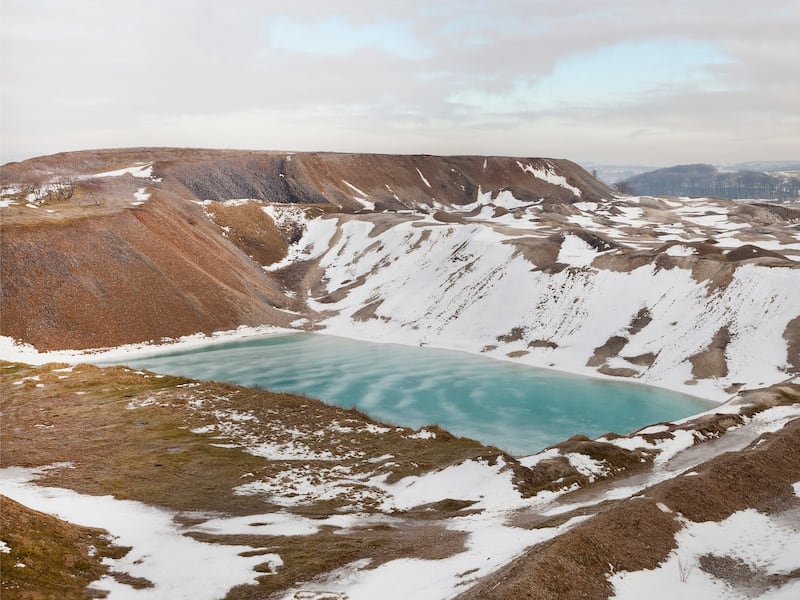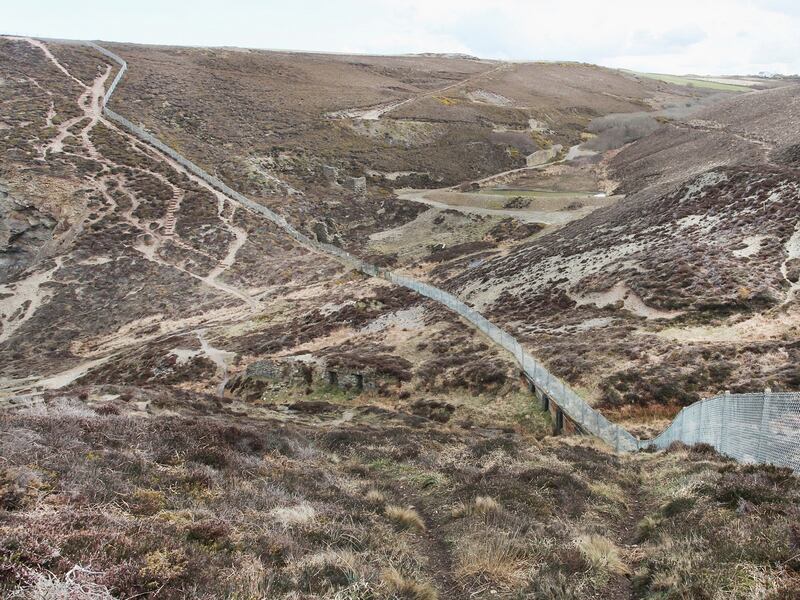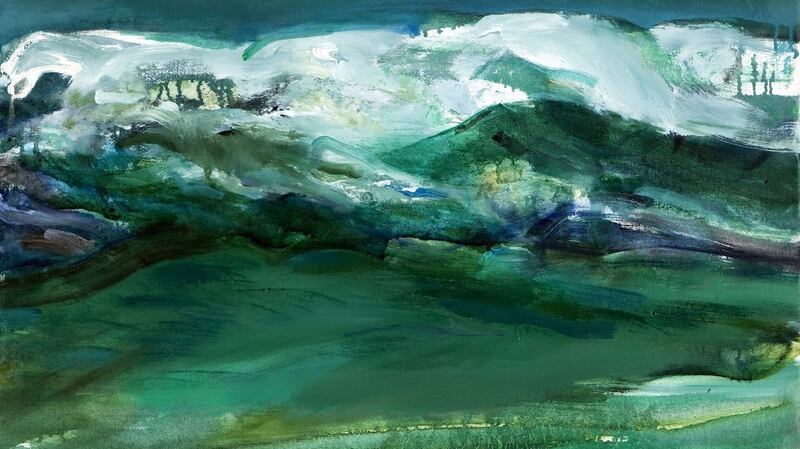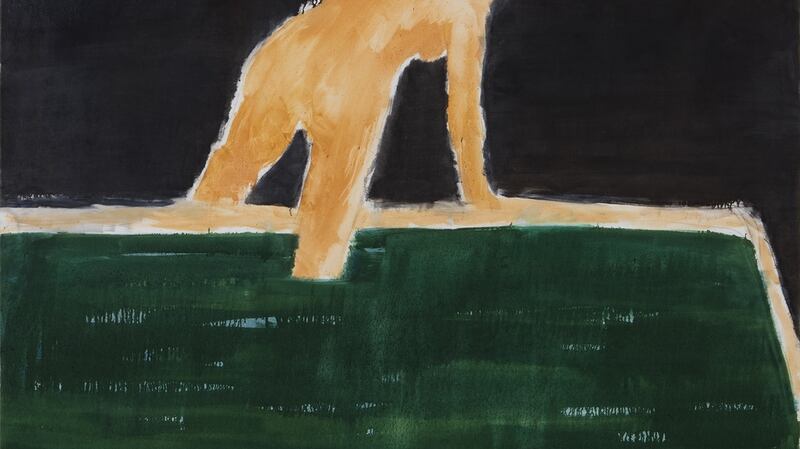Project Cleansweep: Beyond the post-military complex of the United Kingdom
Dara McGrath. Roscommon Arts Centre, Circular Road, Roscommon
Works from Dara McGrath's major photographic series Project Cleansweep have been on view at the Roscommon Arts Centre to mark his winning the centre's Contemporary Photography Award. Curator Linda Shevlin devised the award and the adjudicator was Martin Parr.
McGrath’s work documents sites in the UK “used in the manufacture, storage and disposal of chemical weapons from World War I to the present day”. The title is taken from the 2011 ministry of defence report on the sites.

From the first World War until now is a long time span, encompassing a succession of conflicts, quasi conflicts and potential conflicts, so logically you would think there must be many such sites, and indeed there are. On one level, the project illuminates how history is written into the landscape, sometimes obviously, sometimes invisibly. Mostly the latter, in the case of chemical weapons.
Take one view for example, of an idyllic looking beach on a Scottish island. It appears unspoilt, until you learn that the island, Gruniard, earned the nickname Anthrax Island because it was contaminated with anthrax as part of a biological warfare test in 1942. Access was forbidden for decades after that.

A gesture of protest by the Scottish National Liberation Army in 1981 prompted a decontamination programme. Although that was completed, local people continue to regard the island with suspicion and steer clear of it.
Possibly more disturbing still, a view of a Wiltshire plain comes with the information that, during the Cold War, in 1960, Zinc cadmium sulphate was released to test its dispersion patterns (in this case over 100 miles) because it was calculated to be identical to actual biological weapons.
It was one of many such simulated “attacks”, involving aircraft, ships and, probably more disturbing still, vans and street locations. The problem is that the compounds were carcinogenic, and known to be so.
The test locations, in Wiltshire and elsewhere, are in use today as, for example, military bases, hiking trails and a go-kart track, or indeed just ordinary living spaces.
When the main centre of nerve gas production in the 1950s was closed in Cornwall, the authorities took advantage of the many disused quarries and mineshafts in the locality to dispose of the contaminated building materials and other equipment.

The telltale fence running endlessly across a beautiful landscape is the only evidence that something might be amiss. Efforts to assess the nature of the discarded material are ongoing.
Look out from the eastern edge of Northern Ireland and, weather permitting, you can see the coast of Scotland. It is a relatively narrow channel. What you can’t see are the million or so tons of munitions on the seabed that make it one of the largest marine munitions dumps in the world. McGrath has a classical eye for landscape.
He is a cool observer in the mould of Claude or Poussin rather than a romantic like Turner or Friedrich. Rather than foregrounding the drama he invites us to look beyond appearances, to ask questions.
Most of the locations in Project Cleansweep are quite nondescript – a vacant space in an industrial estate, a building site for a supermarket, a forest – and McGrath doesn't set out to imbue them with a sense of menace.
One site that does look the part, though, is at Grangemouth, Falkirk. It was a bulk storage facility for mustard gas during the second World War. That’s all long gone, though, and now the sprawling installation of storage tanks and chimneys has a more prosaic function. It’s a giant refinery that supplies most of the fuel for domestic consumption in the UK – and Ireland. Its environmental record is poor.
A 32-page limited edition monograph of the work is published in the PhotoIreland New Irish Works series (€10). Runs until May 25 roscommonartscentre.ie
You can see a gallery of images from Project Cleansweep here
Barrie Cooke: Works from the Studio
Oliver Sears Gallery, 29 Molesworth St, Dublin

This is the first significant show of Barrie Cooke’s work since he died in 2014, and it is extremely impressive in its quality and breadth, amounting to a small survey show. It extends back to a Sheela-na-Gig from 1960 and one of a series of bone studies from 1972.
Later pieces include paintings from the artist’s travels in New Zealand and South Africa. In between there are fine nudes, landscapes - and a portrait sketch of poet John Montague made in 1990.
The curator, Rudi Fuchs, situated Cooke in a lineage related to but just outside the mainstream of modernism. Other notable exemplars include, in Fuchs’ view, Oscar Kokoschka and Jack B Yeats. As it happens, Cooke attended Kokoschka’s School of Vision for a summer in the 1950s around the time he moved to Ireland, and the links are clear enough. Kokoschka valued observational honesty, directness and urgency above all else and all three qualities were abiding principles throughout Cooke’s lifetime’s work.
There is a sense of him absolutely throwing himself into each work, be it a drawing, a watercolour or an oil painting. In his sort of painting, he pointed out, he did not depict in the conventional sense. The gesture, the brushstroke, was the detail. He trusted that the truth of his engagement would surpass any kind of conscious pictorial calculation, and it did: his works made directly in response to what was there before him have a breath-taking vitality to them.

His studies of springbok in South Africa are a case in point, small watercolours crammed with life and energy, or his much larger oil of a brimming, surging sea.
He has been linked to the Abstract Expressionists, but he was neither, really, though he did own up to a streak of romanticism in his approach to the natural world.













